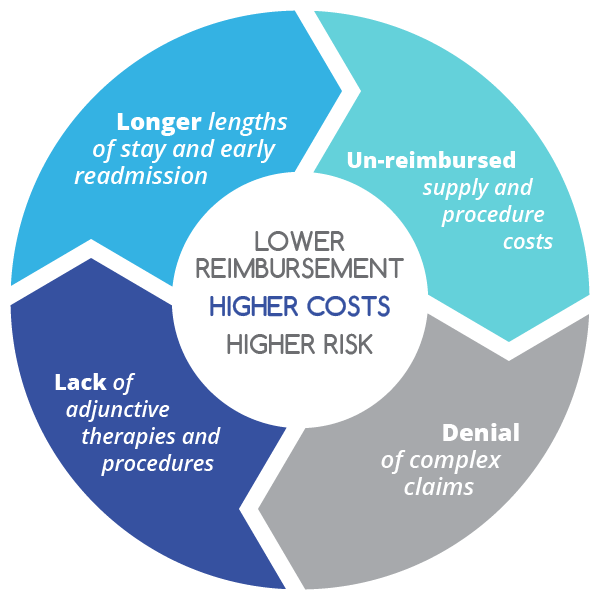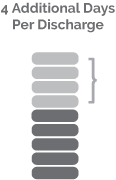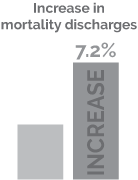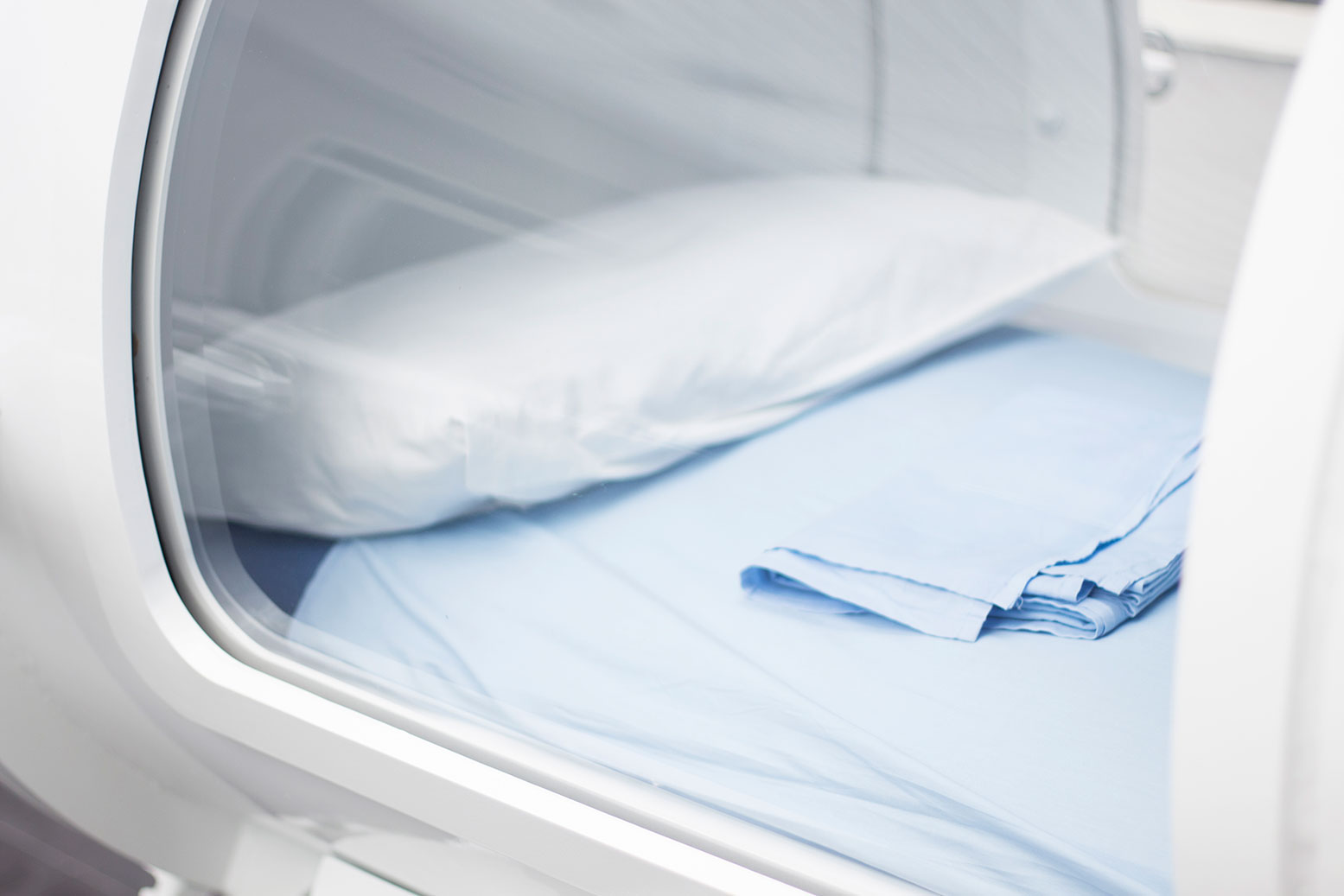Outpatient Wound Care
Types of Wounds Commonly Seen Include:
- Venous Ulcers
- Pressure Ulcers
- Diabetic Lower Extremity Ulcers
- Non-Healing Surgical Wounds
- Arterial Ulcers
- Burns
- Necrotizing Infections
Treatments are reimbursed through Medicare and private insurance carriers and repeat patient visits generally provide a healthy, reliable revenue stream. Program startup and development times are measured in weeks and months, instead of years, and wound care programs can operate in a wide range of facility types.
Outpatient Integrated Services has helped hospital administrators develop wound care programs and operate their services with an OIS-mindset that leverages cost-effectiveness, efficiency, and patient satisfaction.
Financial Risks of Unmanaged Wound Care




The costs associated with inpatient wound treatment programs can vary depending on several factors. The severity and complexity of the wound play a significant role in determining the expenses involved, and the length of the hospital stay contributes to the overall expenses. The Advisory Board estimates that, across the board, inpatient wounds lead to higher costs, lengthier stays, and an increase in mortality discharges.
We Provide:
Consulting
Whether your hospital is looking to add hyperbaric medicine to an existing wound care program, or start up a new hospital-based, or freestanding hyperbaric medicine facility, OIS can help you significantly reduce cost without reducing quality. We also can provide you with a detailed site analysis of your current facility, and comprehensive management services.
Management
OIS can provide the support you need when it comes to managing your wound care services. Whether it is a health system with multiple locations, a community hospital, or a major academic medical center, OIS has worked in your environment and understands your unique needs.
Revenue Audits
OIS believes it’s not just about generating revenue; it’s about keeping it. We provide daily audits that monitor and reconcile issues with documentation, billing, coding, and revenue cycle management that may arise. Daily dashboards update your information through our wound care management software.
Support
OIS provides everything from the design, to policies, procedures and community educational materials. We assist in equipment purchases, staffing, training and daily audits. Our team of experts will make sure you have the tools you need at all times, including an outstanding wound management and tracking system.
Services
Program Start Up
Comprehensive Assessment
Financial Forecasting
Program Development
HBOT Program
Establishment Program Transition
Physician Oversight
Software
Revenue Cycle Management
Clinical Consulting
Co-Management
Marketing

Hyperbaric Oxygen Therapy
Hyperbaric Oxygen Therapy (HBOT) is recognized as an evidence-based adjunct therapy in the treatment of non-healing wounds and amputation prevention. The clear chambers are equipped with televisions and comfortable bedding, so patients are free to watch their favorite television shows or a movie, or even sleep. During the treatments, the patient breathes 100 percent oxygen inside a pressurized chamber, quickly increasing the concentration of oxygen in the bloodstream, where it is delivered to a patient’s wound site for faster healing. Essentially, HBOT therapy helps heal the wound from the inside out.
Hyperbaric oxygen therapy (HBOT) is a safe and evidence-based treatment proven to speed the healing process in certain types of wounds including:
Delayed radiation injury – soft tissue and bone necrosis
Compromised skin grafts and flaps
Chronic osteomyelitis – refractory
Diabetic ulcers
Acute peripheral arterial insufficiency
Osteoradionecrosis
Radiation proctitis/enteritis
Radiation induced cystitis
Necrotizing soft tissue infections
Crush injury
Idiopathic sudden sensorineural hearing loss
The HBOT component of the wound program may benefit the hospital by:
- Adding advanced wound healing capability
- Reducing amputation rates
- Improving healing rates for problem or hard-to-heal wounds



